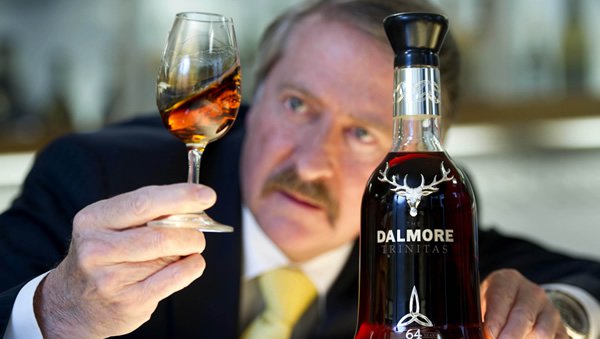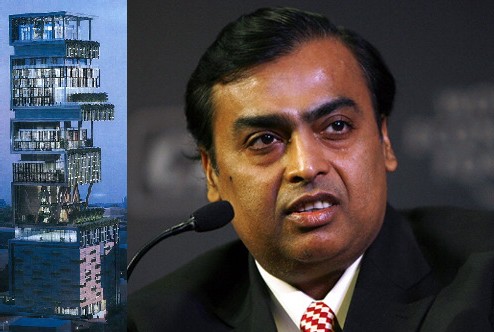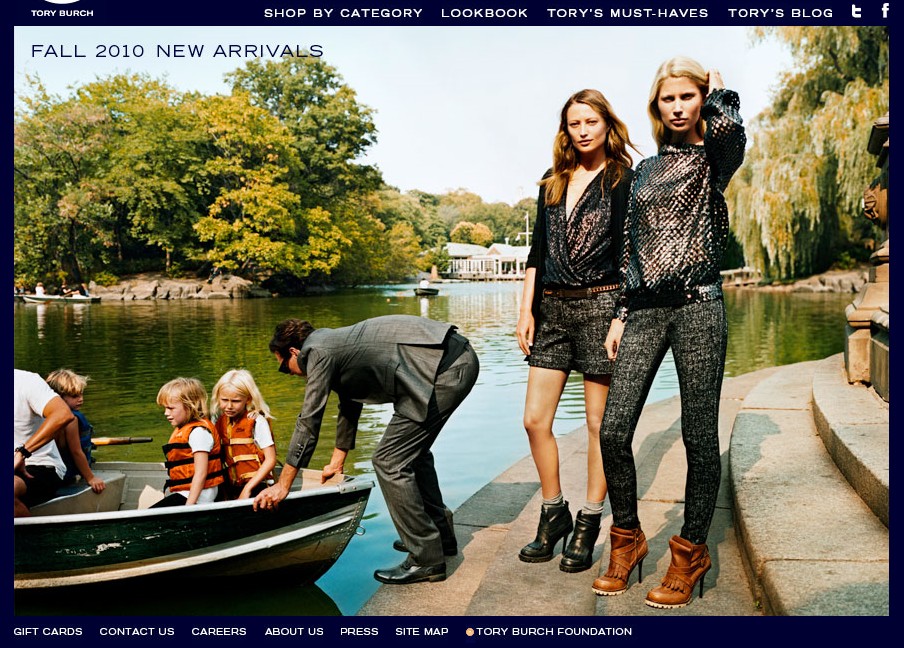Our weekly analysis of the luxury news headlines

Our weekly analysis of the luxury news headlines
Dalmore’s master distiller Richard Paterson examining The Dalmore Trinitas
Billionaire Business: the Reality Behind the Hype
When Forbes issued its annual billionaires list back in March, it offered not only a window into the rapid recovery of global wealth generation but also a tangible sign that attractive opportunities still lie in the highest stratosphere of the luxury market.
Just to recap, there were estimated to be 208 more billionaires this year than last year after a staggering sum got wiped off the recession-hit balance sheets, bringing the total number of ultra-rich (1011 of them this year) closer to the record number counted by Forbes before the crisis in 2008 (1125). If this rate of growth continues, in six months time we could see a new all-time record number of billionaires.
With such mega-fortunes on the rise again and an ever increasing proportion of them to be found in heady emerging markets (where the likes of BNP Paribas and Credit Suisse have been appointing new UHNWI managers), it should come as no surprise that many luxury firms are trying to cash in. This week saw yet another bunch of “most expensive” accolades being bandied about the press for extremely rare and prestige-enhancing goods and services that cater to the Ultra High Net Worth Individual.
“ In six months time we could see a new all-time billionaire record ”
An interview with John Beard, the CEO of Dalmore’s parent company, Whyte & Mackay, Richard Paterson and one of the buyers of the two bottles which have been sold already
First came the news that Whyte & Mackay sold two of its three bottles of Dalmore 64 Trinitas Scotch Whisky for £100,000 ($160,000) each (according to The Moodie Report). The British distillery says that the Trinitas contains the rarest and oldest stocks of whisky anywhere in the world, some of which have been maturing for more than 140 years. Although some luxury industry observers suggest that such products are little more than super-expensive marketing tactics used to grab headlines for Whyte & Mackay’s more affordable luxury whiskeys, the fact that customers do indeed exist for the Trinitas should go some way toward silencing the sceptics.
Then back to the Forbes billionaires list. The man ranked at number four in the world and India’s richest man, Mukesh Ambani, has been in the news this week for another superlative. Time and The Guardian both featured the forthcoming “housewarming” of the chairman of Reliance Industries who has built what is being called the world’s most expensive house, valued at an estimated $1 billion.
The 27-story home in Mumbai, called Antilla, has more floor space than the Palace of Versailles, includes a health club with a gym and dance studio, at least one swimming pool, a ballroom, a 50-seater cinema, three helicopter pads on the roof and a car park for 160 vehicles on the ground floors. What makes this more than just a one-off spectacle is that property observers in India are predicting that Antilla is just the beginning of a wave of similar – if slightly less lavish – mega-homes that the country’s newly rich will build in the coming years.

Mukesh Ambani and his family home in Mumbai, called Antilla (architecture firms Perkins + Will and Hirsch Bedner Associates)
Elsewhere, Reuters reported that The Mandarin Oriental in Tokyo has unveiled a package that is being dubbed the most expensive hotel booking in the world: $671,000 for one night to rent the entire establishment, which consists of 178 guest rooms, a cocktail reception for 500 people, access to the hotel’s nine restaurants and all of its spas from a 3:00 PM “check-in” time until noon the next day. A hotel spokesperson did admit that she will apply for recognition from Guinness World Records once a reservation is confirmed but she stressed that it was not just about breaking records. A number of serious inquiries from companies and wealthy individuals had already been made for the ¥55 million package deal, she said.
“ In Tokyo, this is being dubbed the most expensive hotel booking in the world at $671,000 per night ”
Finally, in a slight twist on the “most expensive” theme, Luxury Daily penned a very interesting piece on the fact that Harrods chose to put all of its most expensive gift items at the front of its annual holiday catalogue instead of buried in the middle, like last year. “London retailer Harrods is upping the ante by pushing its most expensive gift items at the front of its 2010 Hampers and Gifts catalog despite waning British consumer confidence,” wrote Peter Finocchiaro, who suggested that it was about “putting aspirations out front” again after a year of belt-tightening.
Online Luxury: the Good, the Bad and the Ugly

Tory Burch website
The aggregate of this week’s digital news stories proved to be a veritable microcosm of where luxury finds itself in the grand scheme of things. The good news is that a greater number of luxury brands seem to be finally picking up the pace and moving forward with the fundamentals.
The Independent highlighted several examples, the more notable one being the belated ecommerce launch of the homespun avant-garde label Maison Martin Margiela which is powered by the fashion retailing site YOOX. Inside Line focused on the modest progress being made by luxury carmakers such as Bentley and Jaguar in developing more engaging apps for the iPad and iPhone.
Increasingly innovative business strategies are also slowly percolating up from the likes of WWRD Holdings, which has streamlined its ecommerce operations by using a familiar template for each of its three homeware brands (Waterford, Wedgwood and Royal Doultan) in the hopes that it will generate cross-traffic between them, and fashion designer Tory Burch, who is driving traffic to her mobile optimized site through the incentive of free shipping (both stories according to Luxury Daily).
Novel pursuits like Boucheron’s courageous foray into the use of augmented reality for virtually trying on jewellery at MyBoucheron.com (via Haute Horlogerie Magazine) are also encouraging, if perhaps still a bit premature.
“ Novel pursuits like Boucheron’s foray into augmented reality are also encouraging, if perhaps a bit premature ”

Waterford website
The bad news, however, is that just as luxury brands were beginning to close the online gap, a whole raft of hitherto unexplored aspects of the digital era are about to complicate things further. Keeping the ‘omnipresent multi-channel luxury consumer’ satisfied, as pundits are now describing the collective mission, is not going to get any easier.
If several reports released by digital agencies and market researchers which have been analysed by Luxury Daily are in any way indicative of the near future, then the luxury industry had better prepare itself to learn more mass marketing online jargon – and indeed how to apply it. Granted, many of these reports are self-serving as the companies producing them have a vested interest in signing luxury clients with the sorts of services they are promoting, but there are enough of them saying similar things to make the message seem credible enough.
The first story offering a glimpse into this brave new world was: “Luxury brands will need to increase spend on search engine marketing to keep pace and maintain visibility in an increasingly competitive paid search market, according to SearchIgnite.”
“ Mass merchandisers are moving in to take market share from luxury brands online ”
Not only will search engine marketing become more competitive and pricy, according to the authors of the report, but the destination for search engine ad dollars could even change as a new deal between Bing and Yahoo might make Bing a more serious contender to Google than it is now.
The second story suggested that ‘online lead generation’ will account for an increasingly important proportion of sales: “Luxury brands need to be using online lead generation to reach out to consumers on the Internet, according to research by Econsultancy and Clash-Media.”
The last bad news story was a bit of an about-face for digital mavericks who had predicted that Twitter’s recently launched advertising platform would become an exciting and lucrative brave new marketing world. The verdict, however, was that, “Twitter [is] not suited to luxury advertisers – yet,” and that “luxury brands are not likely to allocate budgets…until Twitter evolves best practices and more precise targeting capabilities.”
Finally, as for the ‘ugly’ among the good, the bad and the ugly online news stories of the week, it is the persistent and pervasive conclusion among online media, marketing and sales experts that the luxury industry, despite all its recent efforts, is simply not getting it right in most instances. The headline in Internet Retailer said it all: ‘Luxury retailers’ e-commerce sites are missing the mark’. Citing findings from a report by eMarketer Digital Intelligence, the authors made it crystal clear why this is not just a question of digital kudos. “The result is that lesser-known retailers, flash sale sites and mass merchandisers are moving in to take market share [from luxury].”










